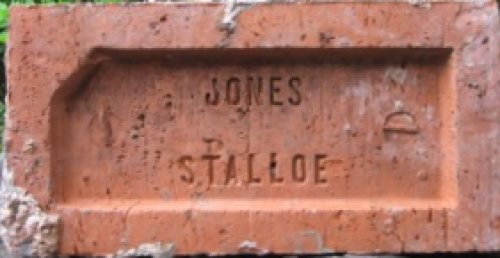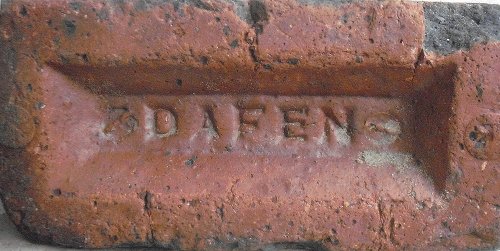
Wales page 2, Letters D to J

Found by Lindy Martin on Llansteffan beach, Dafen is a village situated east of Llanelli in Carmarthenshire.
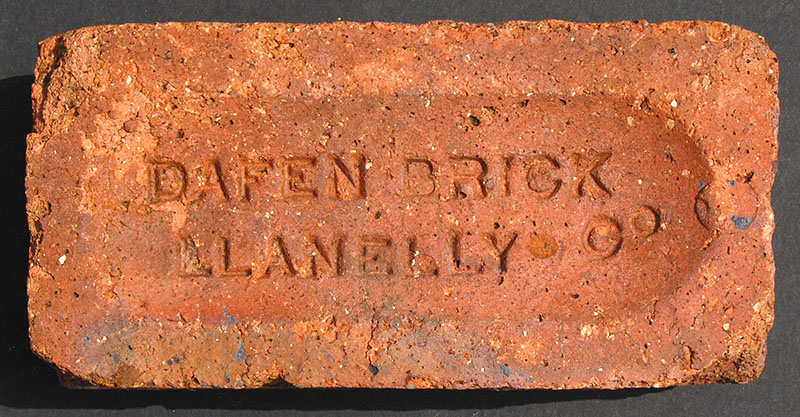
A note about Risca brickworks by Richard Paterson: There were once five brickworks at Risca, which lies some 6 miles north-west of Newport. Three were in the Darran area, from which these and the Jones, Risca bricks came. A fourth works, (the Danygraig works) belonged to Southwood Jones, where the SJ Risca British Made brick came from. That site is now used for the manufacture of concrete products. Southwood Jones also had the brickworks at Graigddu, Pontypool where a further example - the SJ Graigddu British Made brick - was made. The fifth brickworks at Risca was founded by John Russell near the Blackvein colliery (see Risca Coal Co).
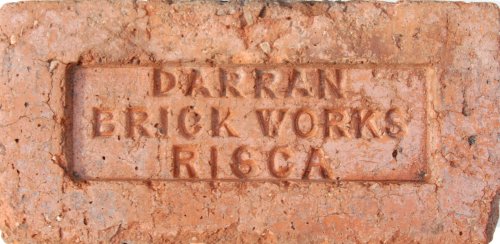
Risca lies 8km north-west of Newport in South Wales. Image PRBCO.
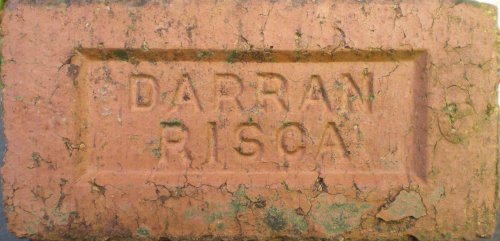
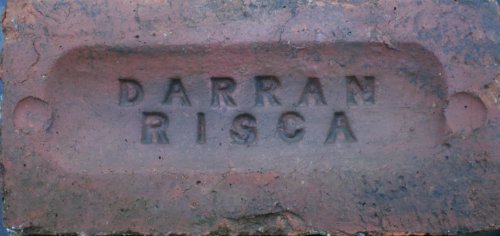
Thanks to Richard Paterson for the photos.
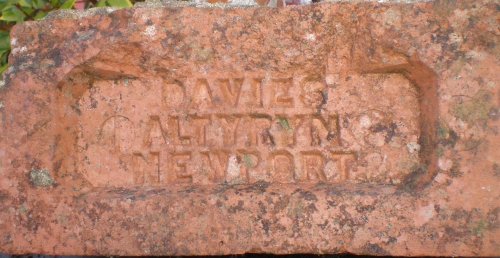
Davies, Altyryn were predecessors of the Star Brick Co (later National Star) at the Allt-yr-Yn works at Newport. The works once supplied the eastern valleys of South Wales via the Crumlin arm of the Monmouthshire & Brecon canal. The works site is now a nature reserve. Thanks to Richard Paterson for the photo and information.
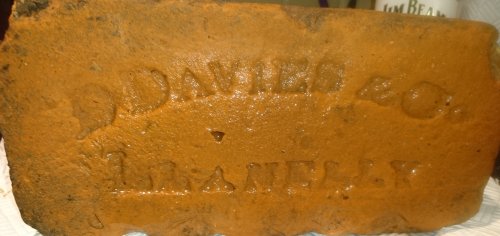
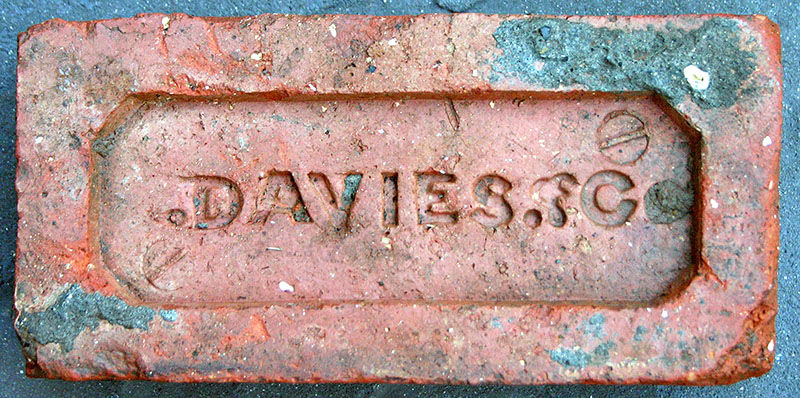
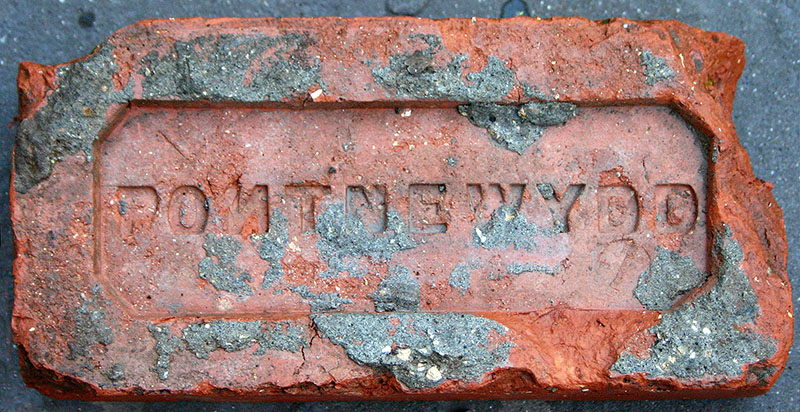
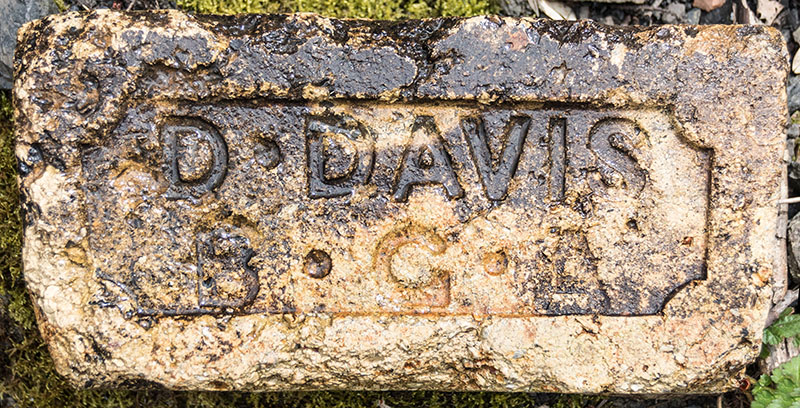
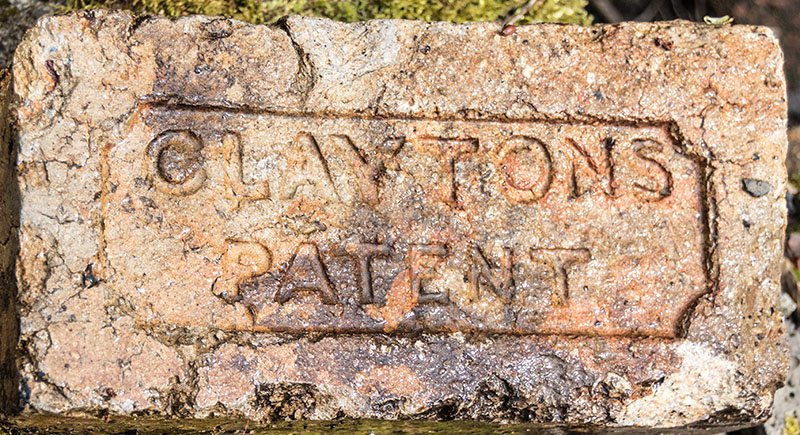
B G A probably stands for 'Blaen Gwawr Aberaman' where David Davis sank the Blaegarw Colliery 1843 and 1845 to work the area south of Aberdare. In 1866 the new company David Davis and Sons Limited was formed but after only a few months David Davis died and his sons, Lewis and David took control of the company. Lewis Davis died in 1888 and control devolved to his son, Frederick Lewis Davis, two years later David Davis and Sons became a Limited Liability Company. The company then withdrew from the Aberdare area and concentrated on its collieries in the Rhondda Fach Valley. The OS map surveyed between 1868 and 1878 shows a brickworks with four circular kilns adjacent to the colliery. Photos and info from Phil Jenkins.
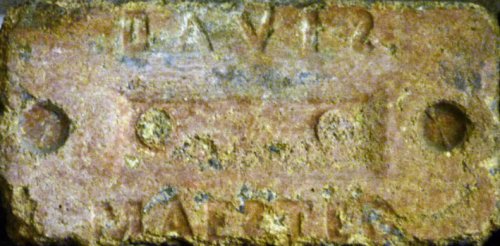
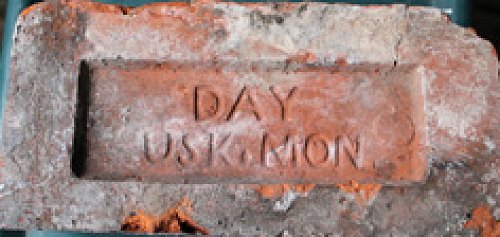
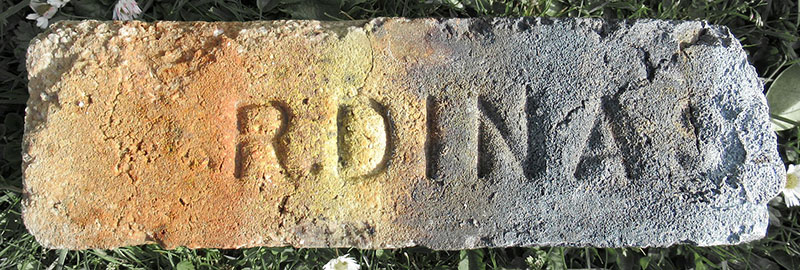
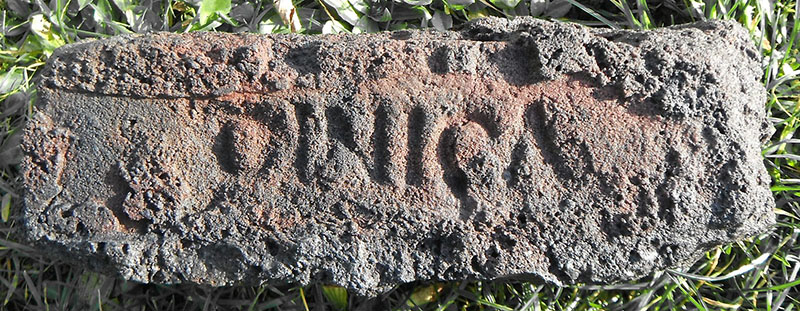
Dinas Firebrick Works, Kidwelly. Photos by Ian Suddaby.
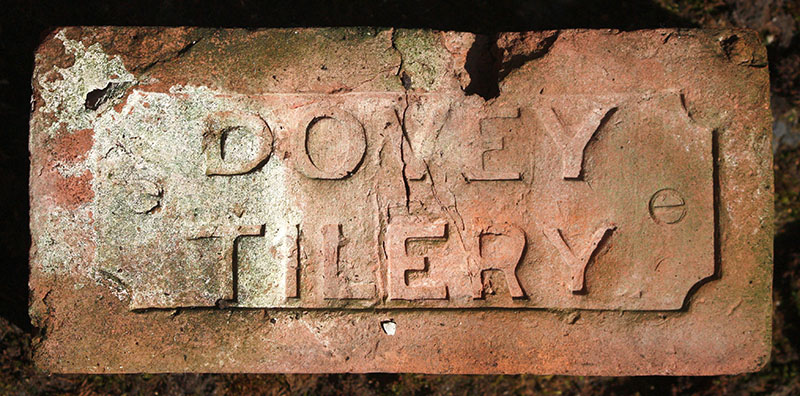
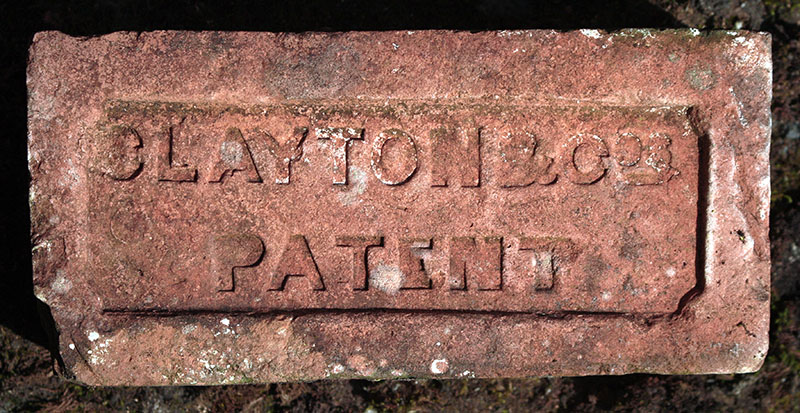
Ynyslas Brickworks, Near Borth, Cardiganshire. Photos by David Kitching.

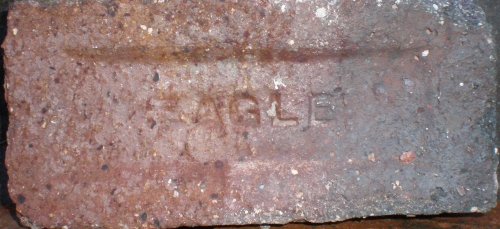
The Eagle Brickworks at Cwmafan, near Port Talbot, was once part of the Evans Bevan brewing, coal mining and brick making empire. The works ceased operations in 1968, thanks to Richard Paterson for the photos and information. Also see entry for Evans Bevan.
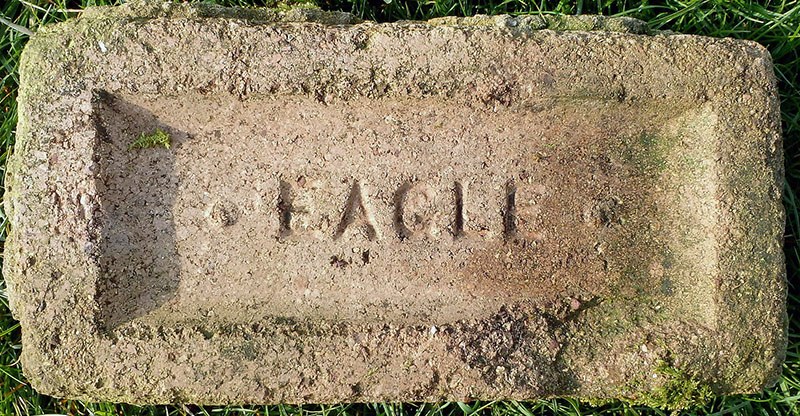
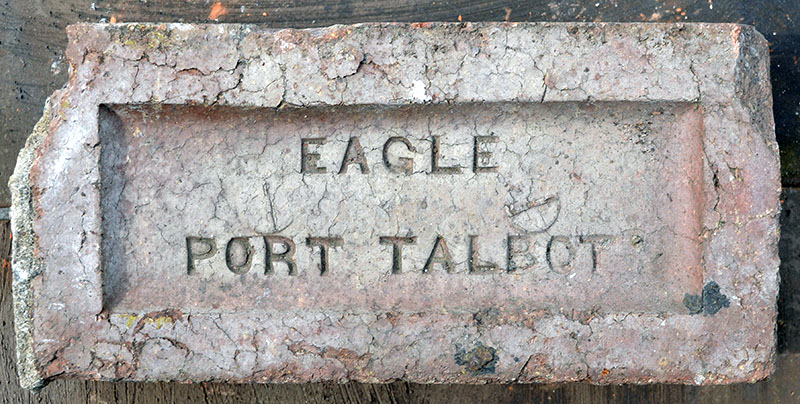
Photos by Frank Lawson.
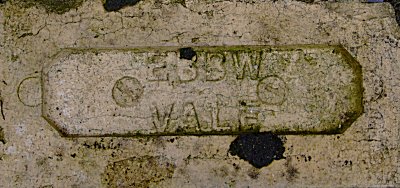
From the famous steel making valley of the same name.
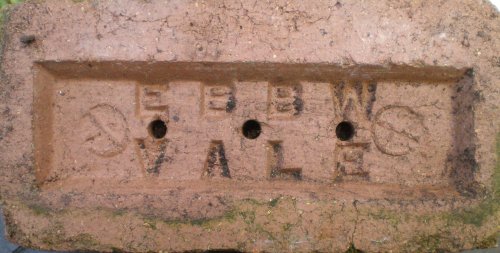
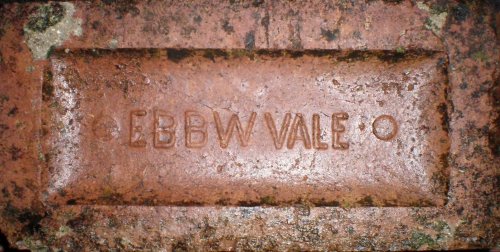
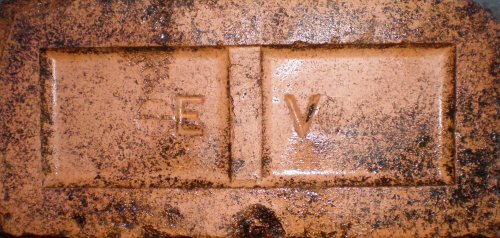
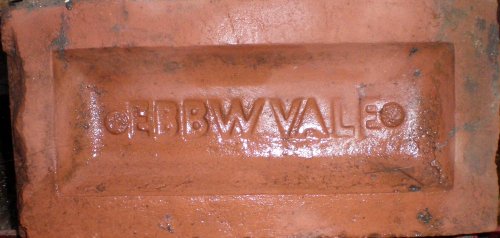
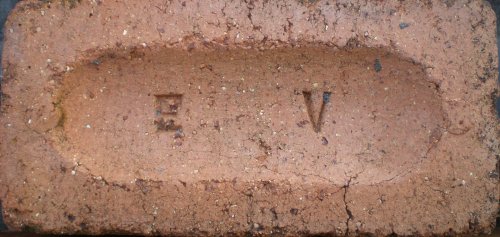
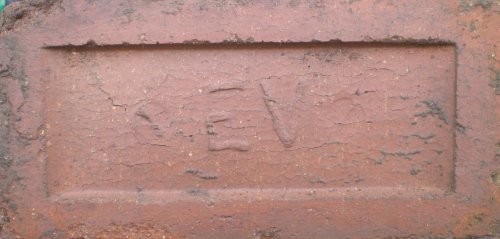
Thanks to Richard Paterson for the photos.
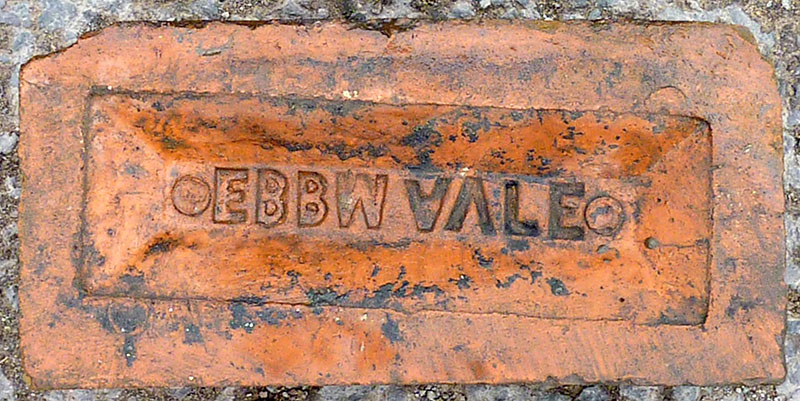
Photo by Martyn Fretwell.
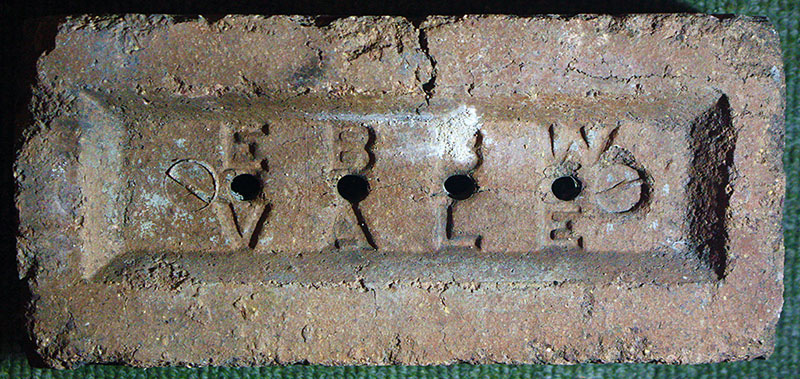
Photo by David Kitching
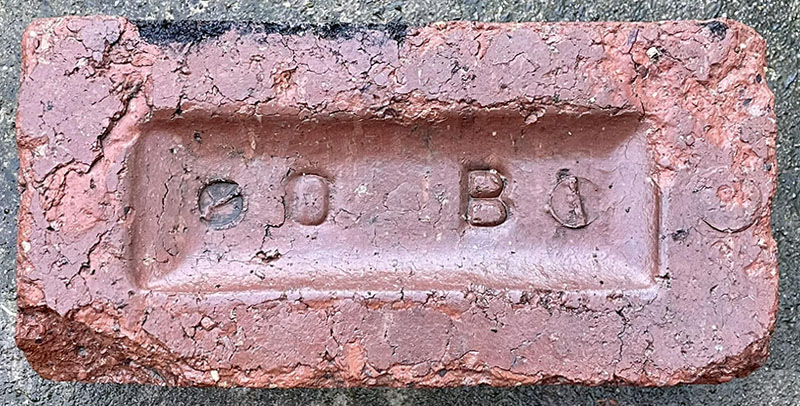
Eclipse brickworks, Horeb, Llanelly, Carmarthenshire. Photo by Phil Burgoyne.
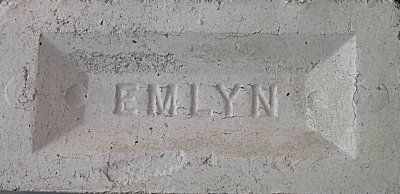
Coal mining began in the 1790s in Pen-y-groes, near Ammanford, Carmarthenshire, but it was not until 1893 that the Emlyn Colliery was built, and 1904 before the Emlyn Colliery Company was established. The owner was John Aeron Thomas, at the time MP for East Gower. The Emlyn Colliery was later owned by his son Gwylim Aeron Thomas and closed in 1939, but the Emlyn Brickworks remained open until the mid-1990s.
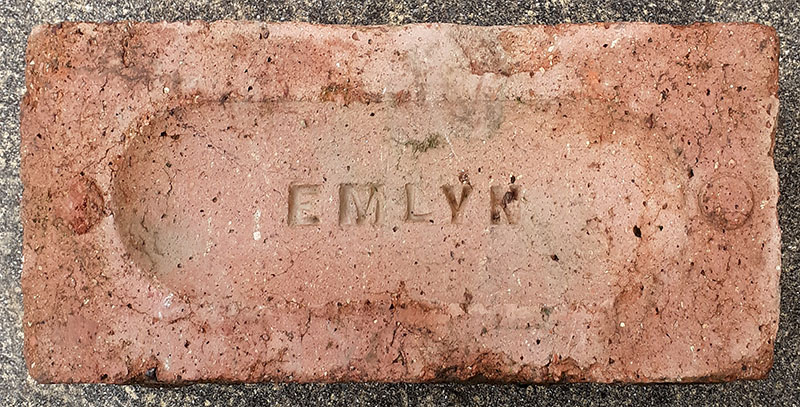
Photo by Alan Bevan.
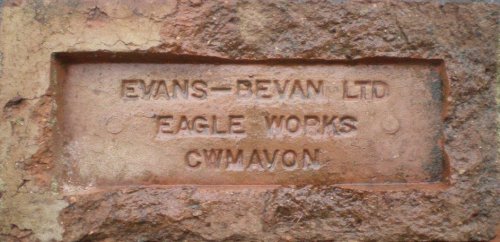
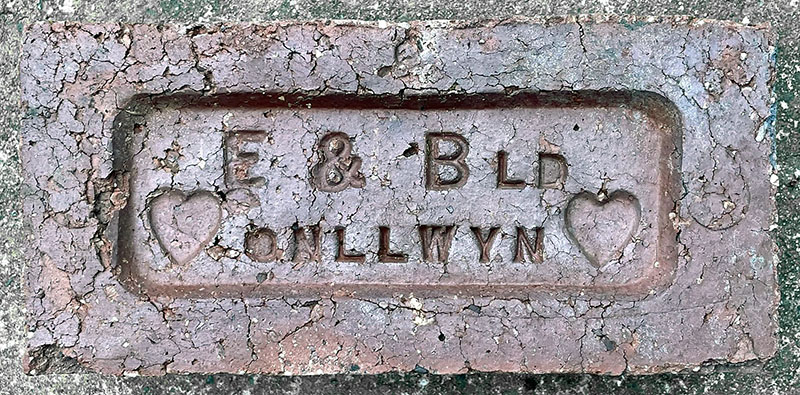
Photo by Phil Burgoyne
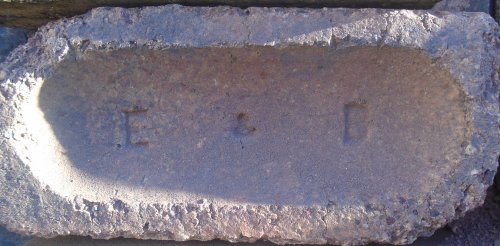
From the Evans-Bevan works at Onllwyn, in the Vale of Neath, and probably made before nationalisation and consequent use of the NCB Onllwyn name. Photo and info by Richard Paterson.
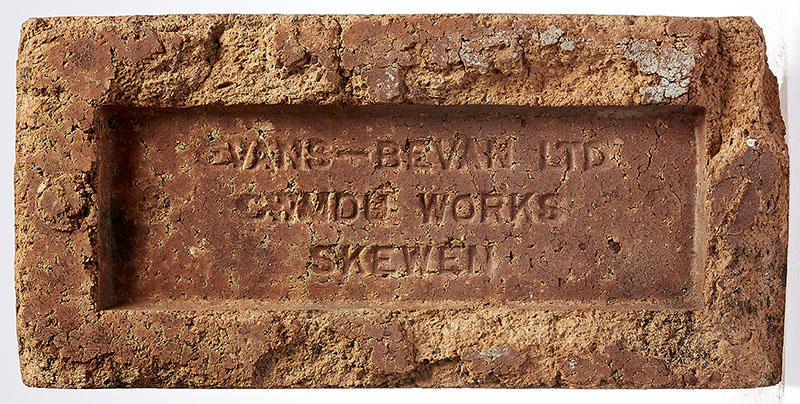
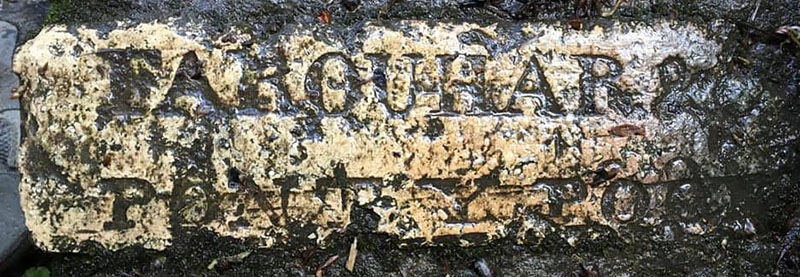
From an early version of the Blaendare Brickworks. In the first quarter of the 19th century the firm of Robert Farquhar and Company, of Pontypool, acted as coal merchants and owner of a level colliery at Blaendare near Pontypool. The proprietors were Robert Farquhar, Edwin Allies and Andrew Maund. Robert Farquhar died in 1832 and his partnership broke up. The brickworks became the 'Blaendare' company and continued working until the 1950s. Photo by Jeanette Fry.
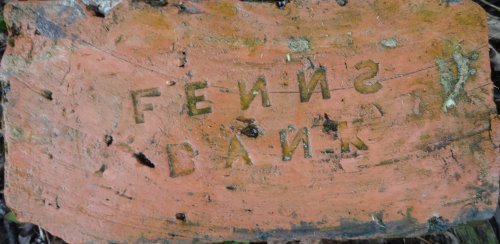
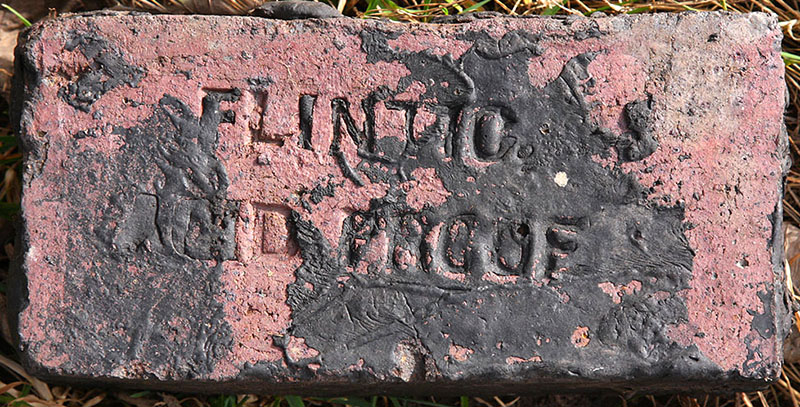

Photos by David Kitching.; Probably Flintshire bricks, location of works unknown.
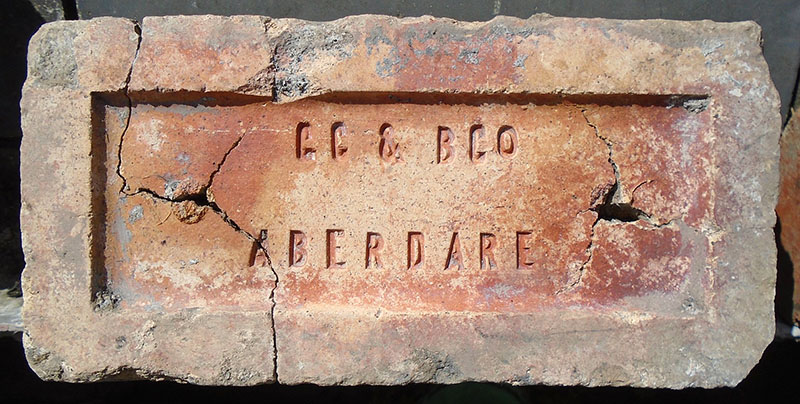
Photo by Richard Paterson. No info on this one as yet. The initials could stand for Gadlys (or Glamorgan) Coal & Brick Co.
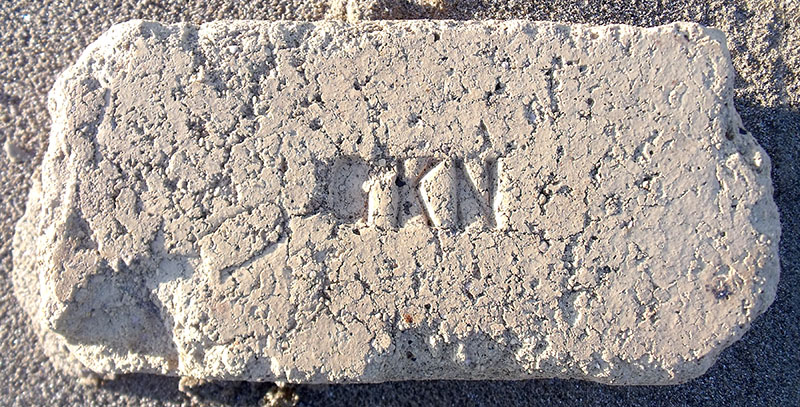
Found on the shoreline between Llanelli and Burry Port by Hugh Owen. Made by Guest, Keen & Nettlefold.
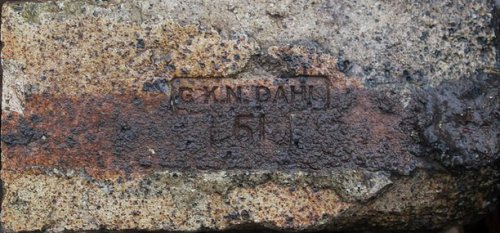
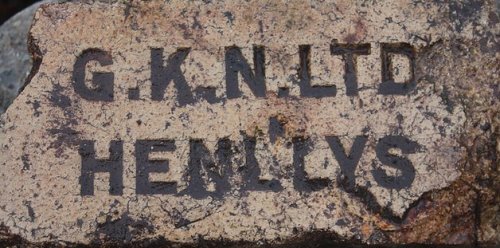
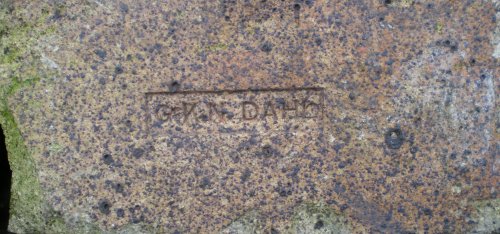
G K N Dahl, photo by Richard Paterson.
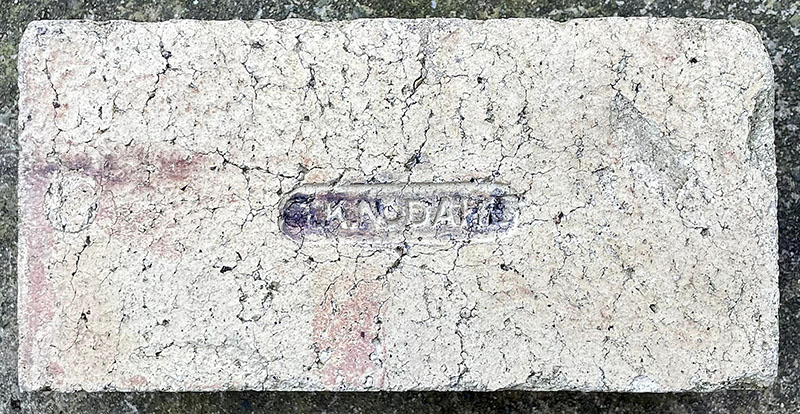
Photo by Phil Burgoyne.
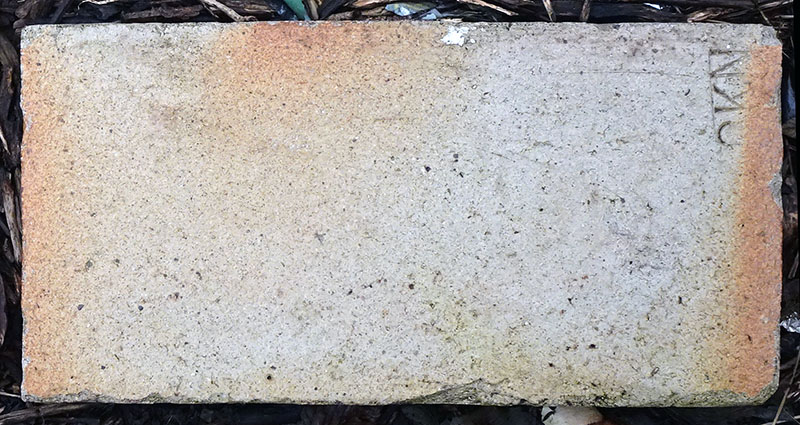
Photo by Lawrence Skuse.
There is additional info on G K N under Henllys.
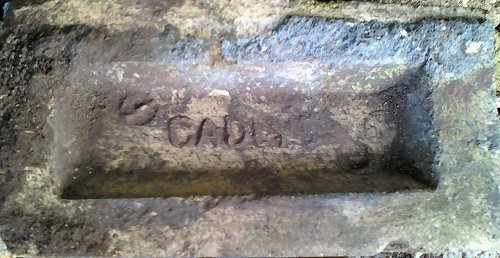
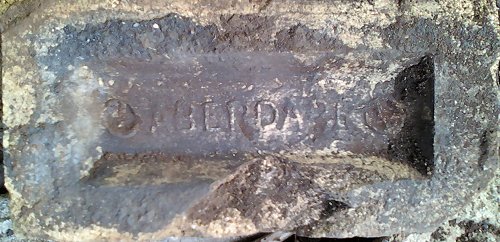
The front and back of a Gadlys brick by Brotherglyn.
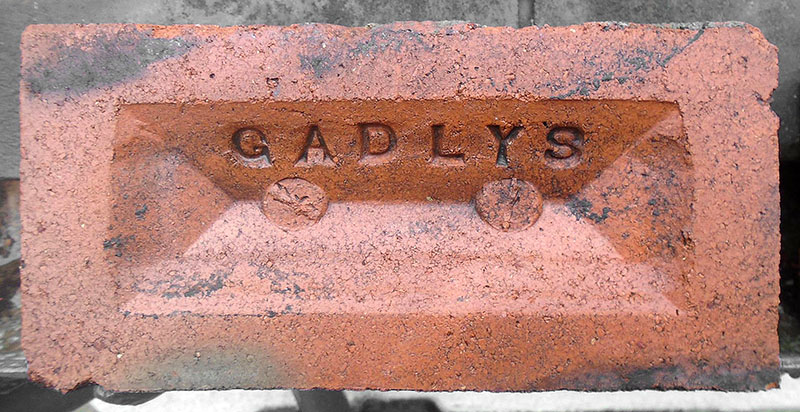
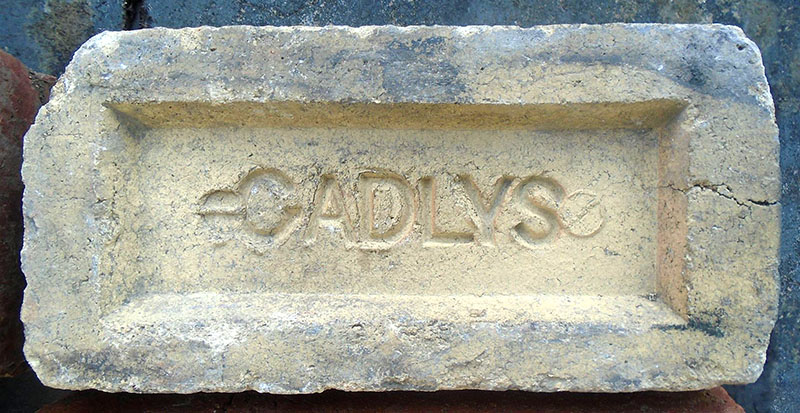
Photos by Richard Paterson. Aberdare Tesco has now been built
on the Gadlys brickworks site.
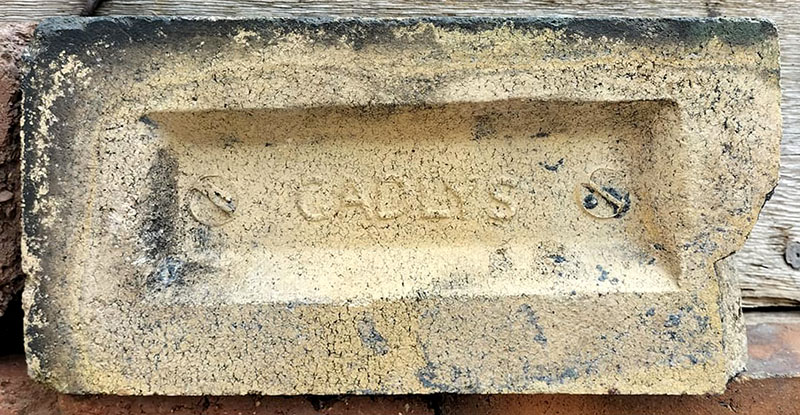
Photo by Deiniol Iago.
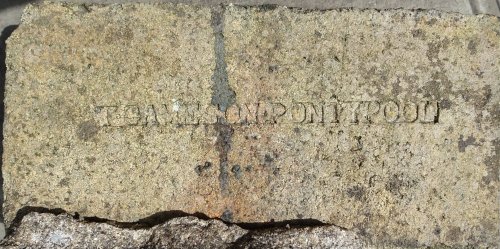
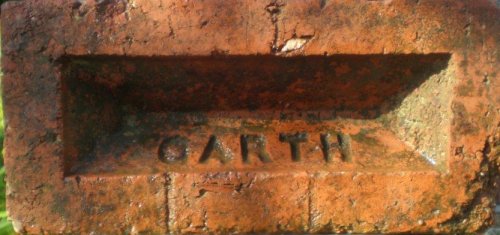
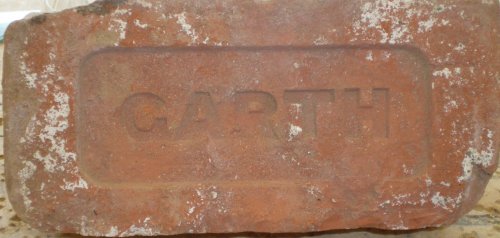
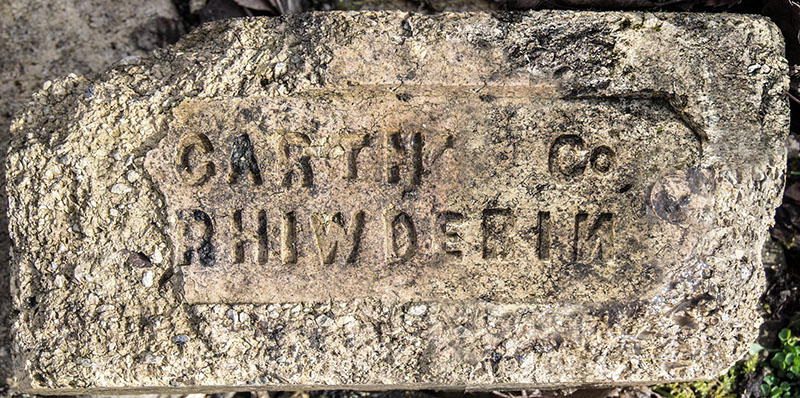
It appears that Rhiwderin brickworks was owned by the Garth Sheet Iron Co of the Garth ironworks, Rhiwderin, near Newport, which went into liquidation in 1878. The 1882 OS map shows 'old brick kilns' and 'old claypits' here. Info and photo by Phil Jenkins.
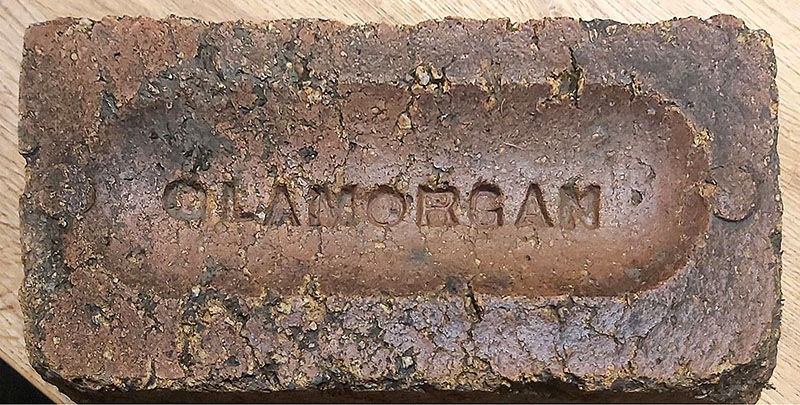
Made on the Glamorgan Colliery site at Tonypandy. Production started in 1863 and they were produced until the 1930's. On the site now stands the ASDA store. Photo by Colin Hill.
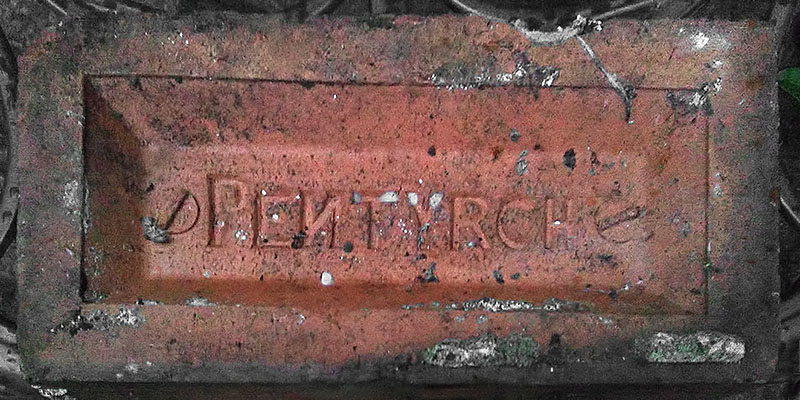
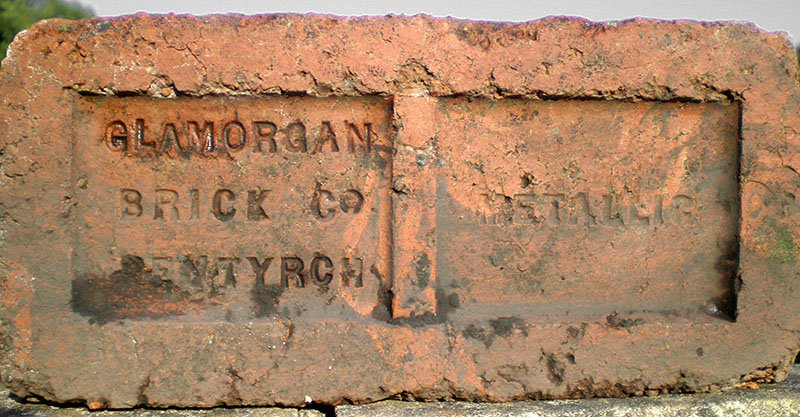
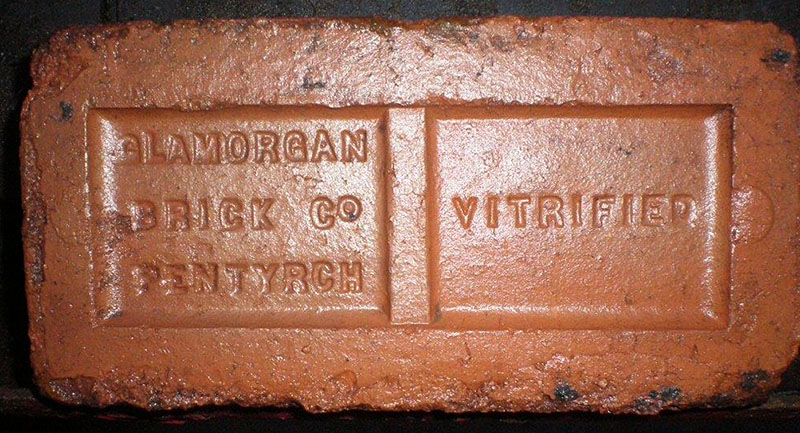
The Pentyrch Brick Works began as part of the New Lan Mine and Pentyrch Ironworks complex on the west side of the River Taff some 6 miles north of Cardiff. The brickworks was originally operated by Owens & Watkins, later by Evan Owens & Co and was taken over by the Glamorgan Brick Co in 1915. It appears to have closed between the wars. The site is now a housing development. Information and photos by Richard Paterson.
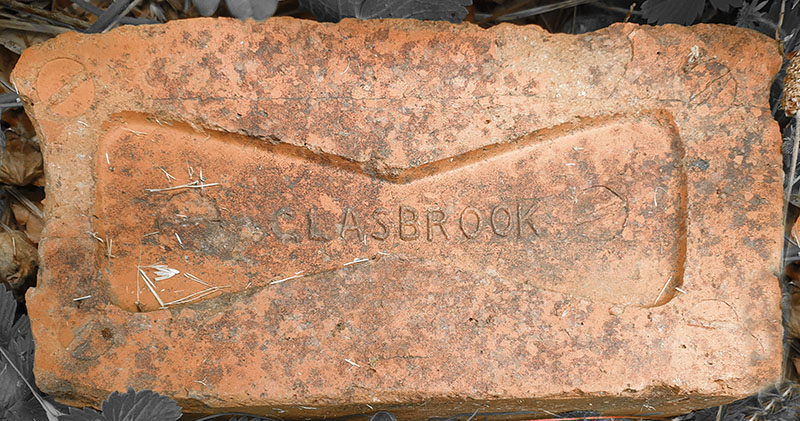
Werngradog Brickworks, Fforestfach. 'Glasbrook's Brick and Tile Co' was established by John Glasbrook, a colliery owner, in the 1850s. It was later run by his sons; John Glasbrook Sons and Company Limited was wound up voluntarily in 1929. They were prosecuted in 1890 for employing under-age boys. The site, Werngradog, is unclear but it may have been part of Glasbrooks Garn-coch Colliery at SS 6125 9695. Info by Phil Jenkins, photo by Tim Lawton.
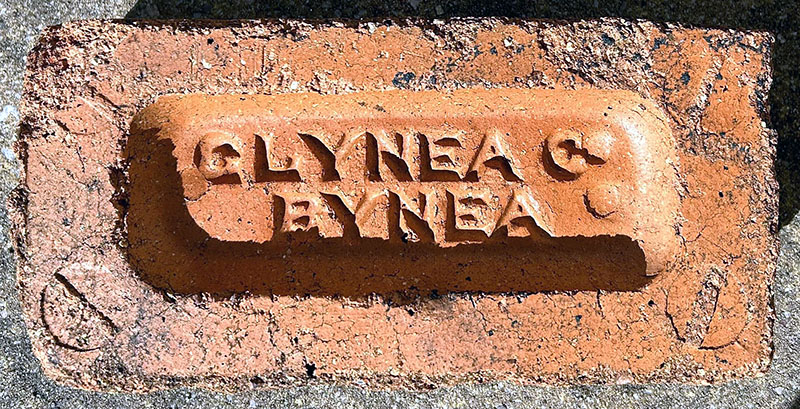
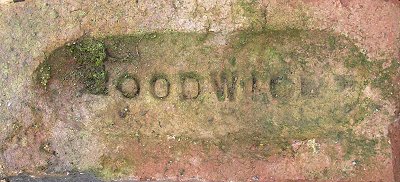
Goodwick is a small village near Fishguard in Pembrokeshire. The following is from the Pembrokeshire Virtual Museum site:
Goodwick Brickworks began as the 'Fishguard Harbour Brickworks Ltd' in 1908, just a year after the Great Western Railway arrived. The nearby blue shale and clay was dug by hand. There were two beehive kilns and steam was used to power a grinding mill, pug mill and wire-cut brick maker.
In 1910, the works was bought out and re-organised as the 'Goodwick Brickworks Ltd' and another beehive kiln was added. It was re-organised again after a closure during the First World War, The beehive kilns were replaced by a continuous type kiln (which was used until 1969), another grinding machine was added and the wire-cut machine was replaced by a stiff plastic brick shaper. Further technical improvements enabled 75,000 bricks a week to be produced in the late 1920's, largely to cope with the growth of Milford.
In the late 1930's, on the advice of a Swiss expert, the final layout was adopted. Hand kiln firing was replaced by mechanical feeders worked by compressed air. The drying floor was replaced by drying chambers ' two banks of nine. Blackstone diesel oil engines replaced steam power (these were, in their turn, replaced by electric motors in the early 1950's), a loading hoist was added, and the rails for transfer cars extended. These improvements enabled the production rate to be further increased to 100,000 bricks a week. At this time 40 men were employed, although some quarry workers were enticed away by higher wages at Trecwn's Royal Ordnance Factory.
Peak production of 120,000 bricks a week was reached during the Second World War. Cheaper road transport replaced rail at this time. In 1946, the 'British Anthracite Company Ltd' took over. Output fell to 100,000 bricks a week in the next few years due to a labour shortage. There was a further decline to 60,000 bricks a week by 1969, the year of closure, when 30 men were employed.
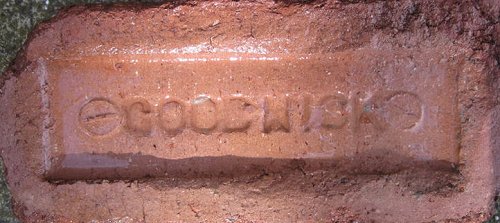
Thanks to Mike Bennett for the photo.
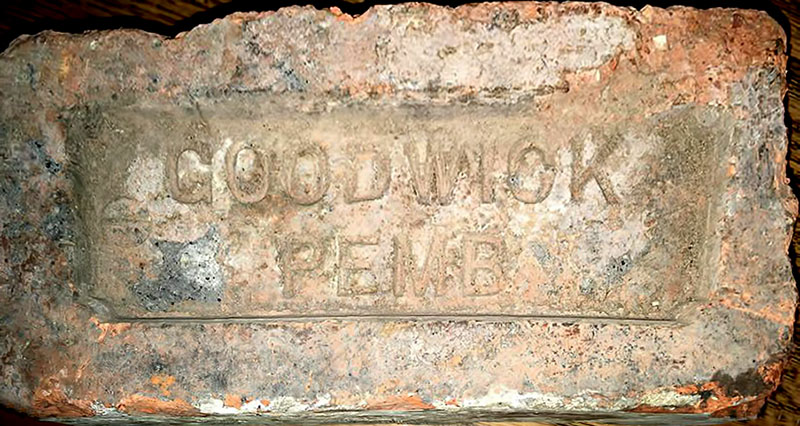
Photo by Tom Kitching.
Carol Williams writes: My Grandfather worked there years ago. He retired due to an accident at work. His hand was caught in the machine used to make bricks and he was left with only 2 fingers on one hand
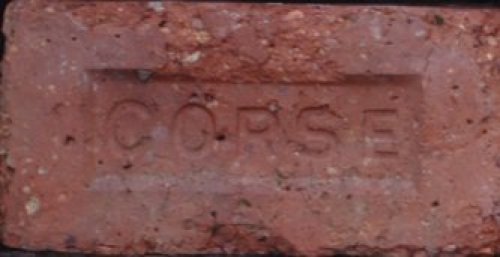
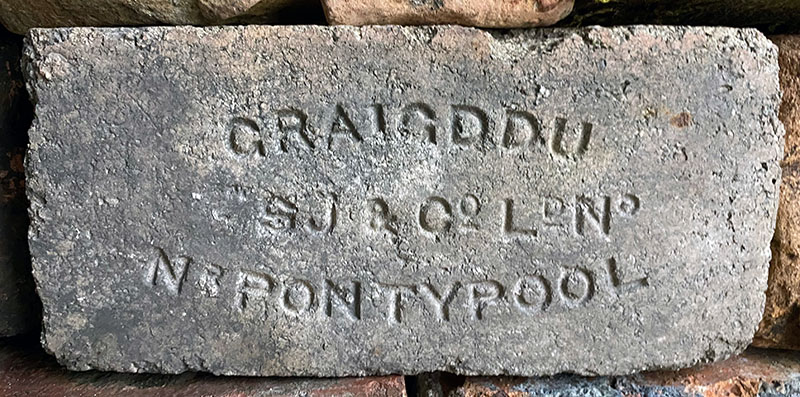
Photo by Brandon Havard.
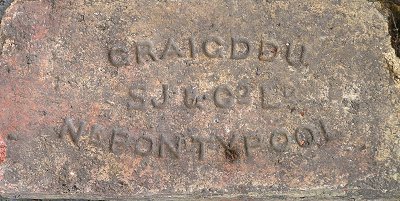
The Mineral Statistics Directory for 1858 lists the Graigddu Brick Co, manufacturing fire and building bricks, with an average yearly output of 305,000 bricks. Slater's of 1868 lists it as Graigddu Co, Cwmnantddu, Pontypool; Kelly's of 1895 still lists the Graigddu Works, but Graigddu S J (Southwood Jones) is also mentioned for the first time. They also had works in Risca, Malpas, Newport and Morriston. There is no mention of Graigddu Co after 1895. Thanks to Lawrence Skuse for the info.
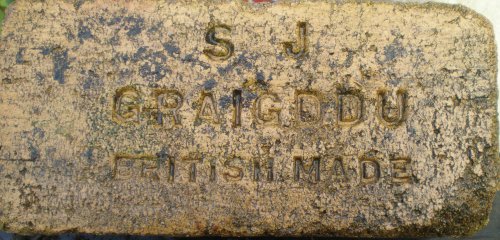

Thanks to Richard Paterson for the photos.
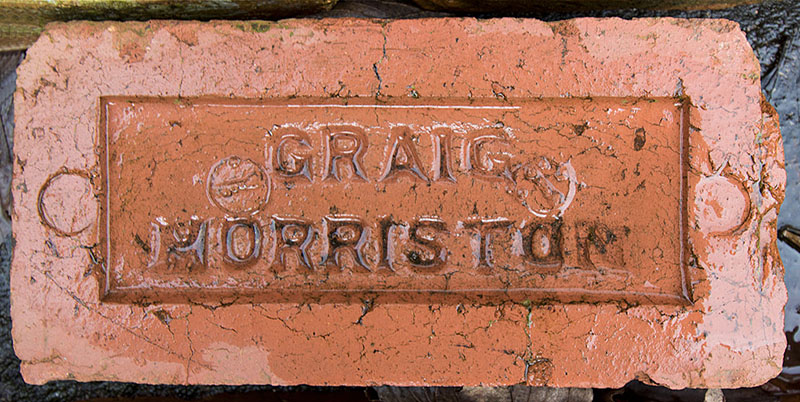
Photo by Phil Jenkins.
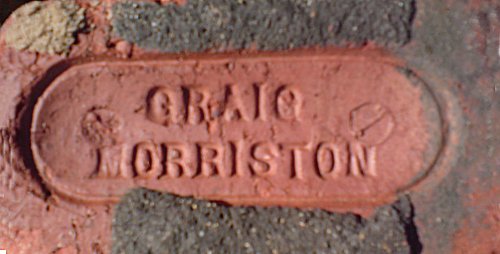
Found by Bryn Jones in Broughton Bay, Llangennith, Gower. Made in Morriston near Swansea. This firm came under the umbrella of the Star Brick & Tile group in the late 1950s. Towards the end of the group in the 1970s, bricks were being produced with the generic die "National Star Newport", and small letters to the lower left or right of the stamp to indicate the works of origin. It is believed that the letter "G" denoted bricks from the former Graig Morriston works.
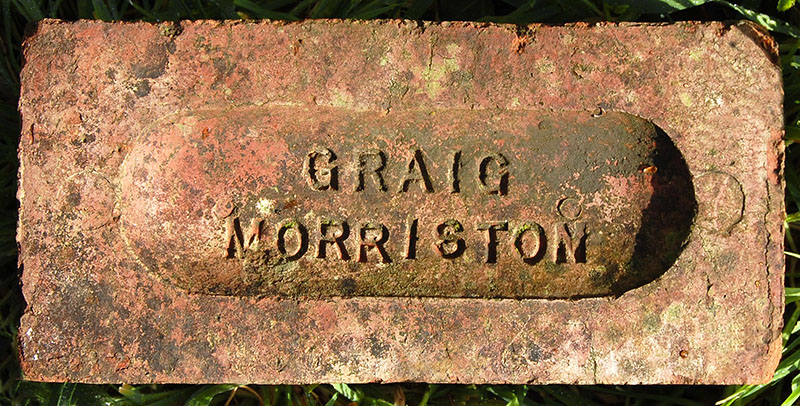
Image PRBCO.
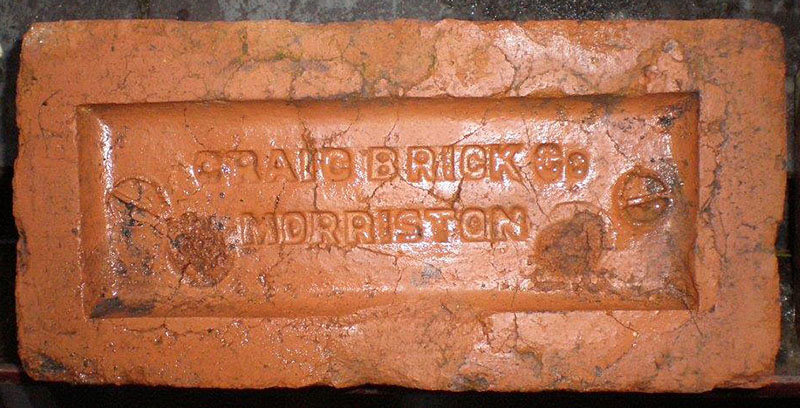
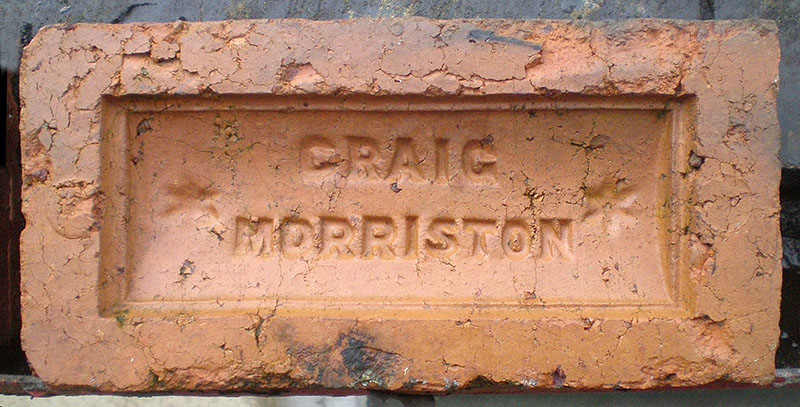
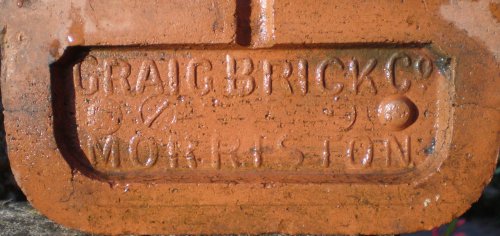
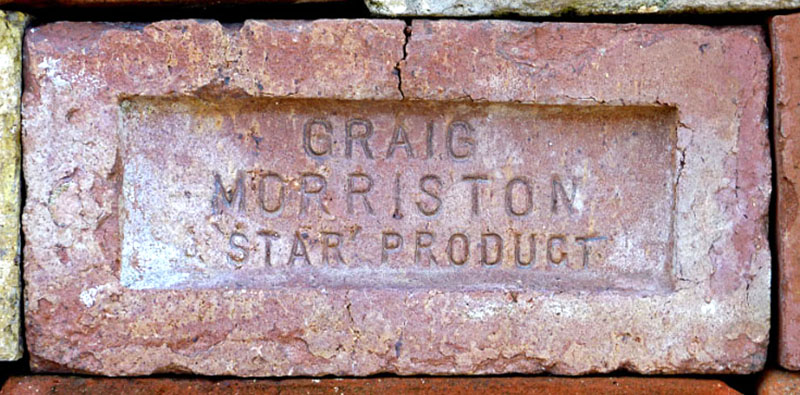
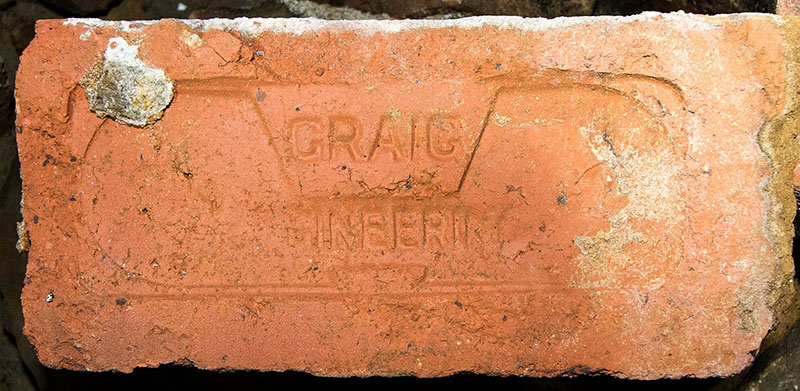
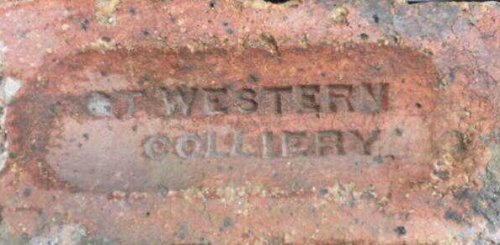
Made at the Great Western Colliery, Trehafod. Photo and info by Gareth Thomas.
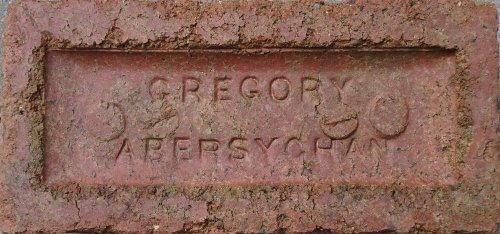
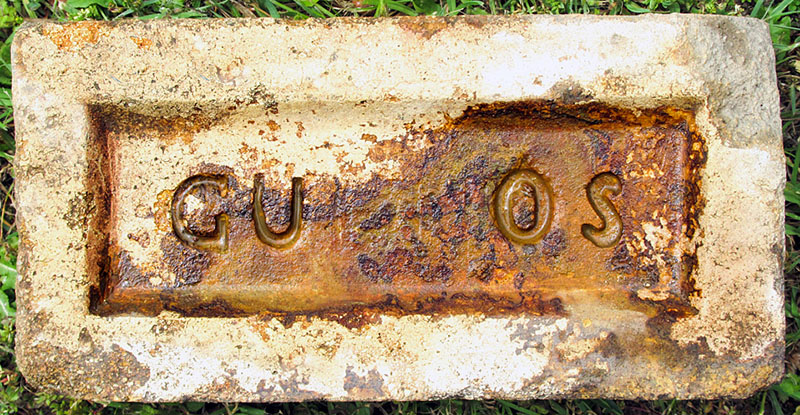
The Gurnos Brickworks, Ystalyfera is
shown on the OS 1903 map. Grid reference - SN77240926. Photo & Info by Martyn Fretwell.
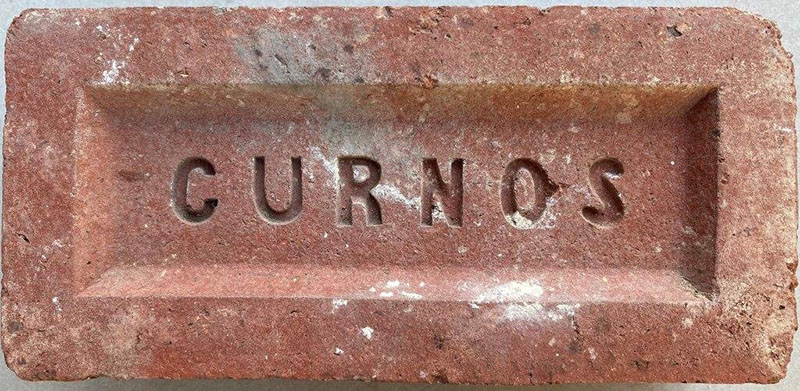
Photo by Phil Jenkins.
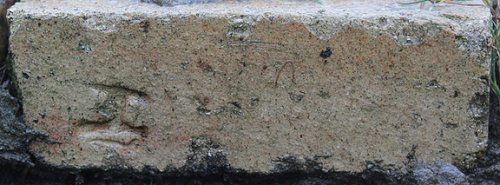
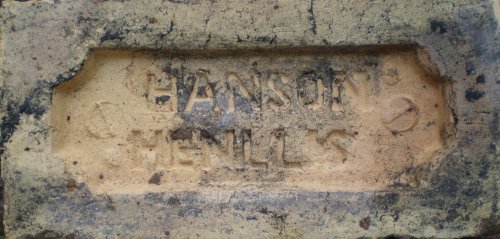
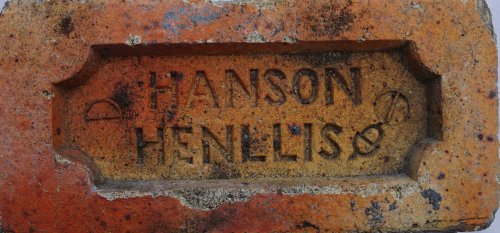
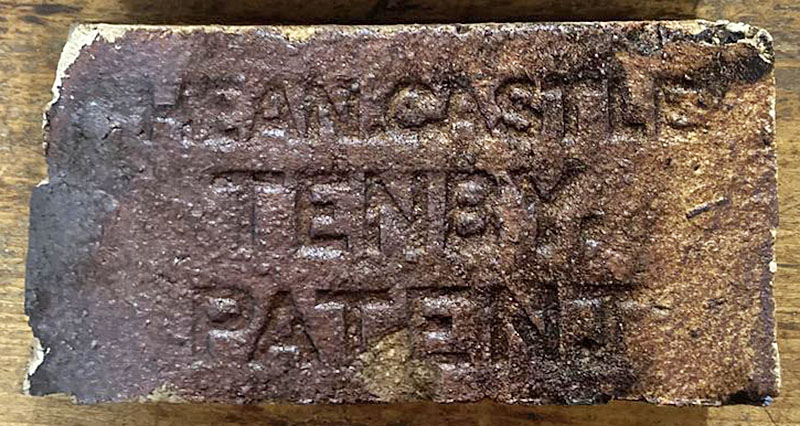
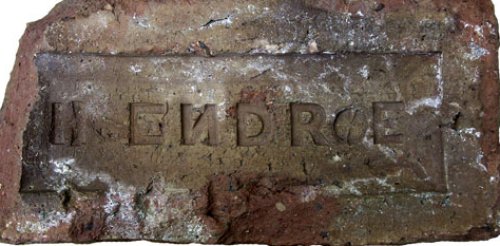
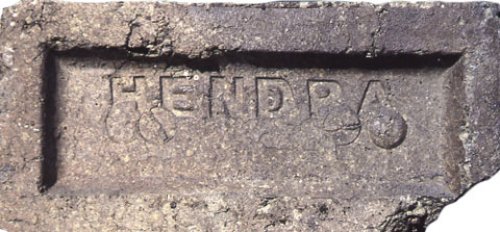
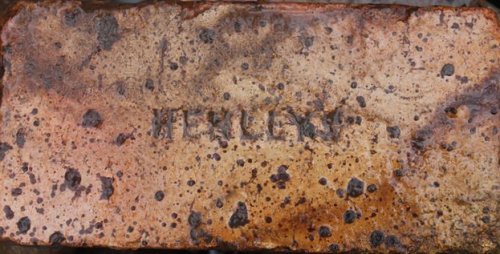
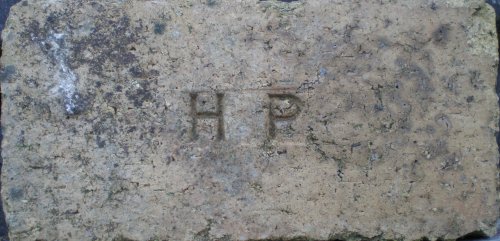
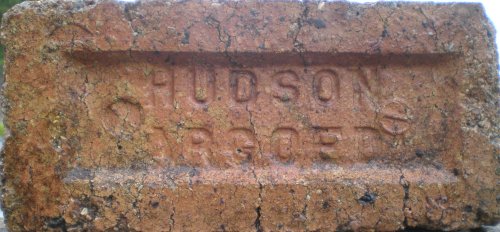
Thanks to Richard Paterson for the contribution. Hudson Argoed bricks were produced at the Argoed Brickworks near the hamlet of Cynonville in the Afan Valley some 7 miles from Port Talbot. A country park now occupies the brickworks site. The firm was at one point also known as Hudson & Howell.
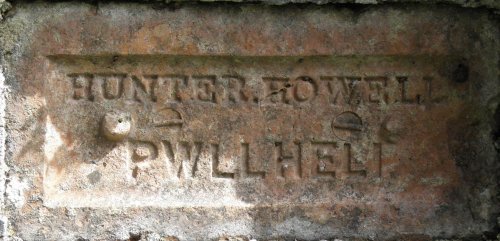
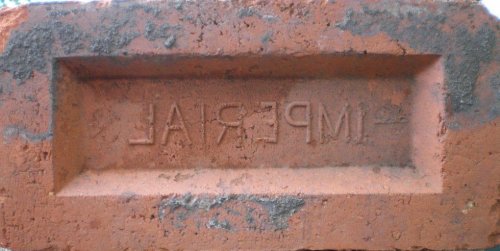
Richard Paterson found this one in Newbridge, how the name was reversed is anybody's guess!
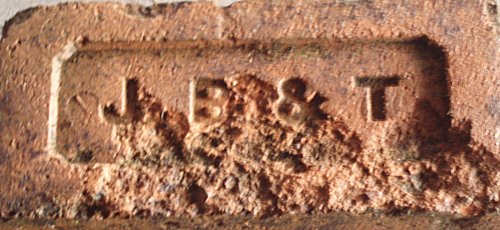
Believed to have been made by the Johnston Brick & Tile Co. in Pembrokeshire, thanks to Mike Bennett for the photo.
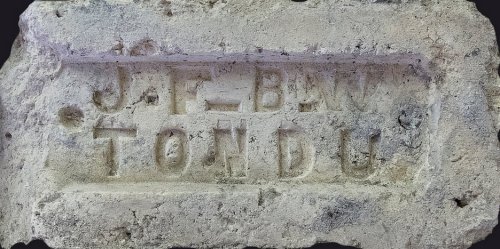
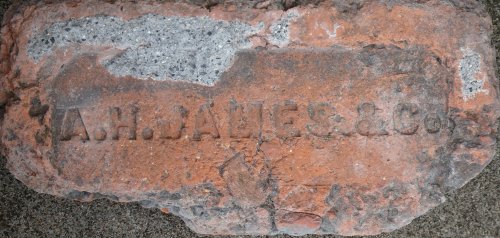
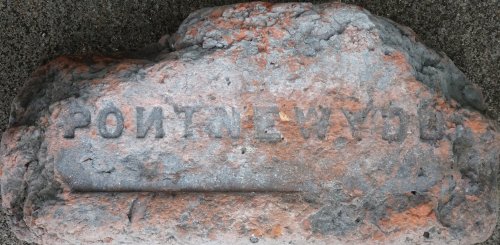
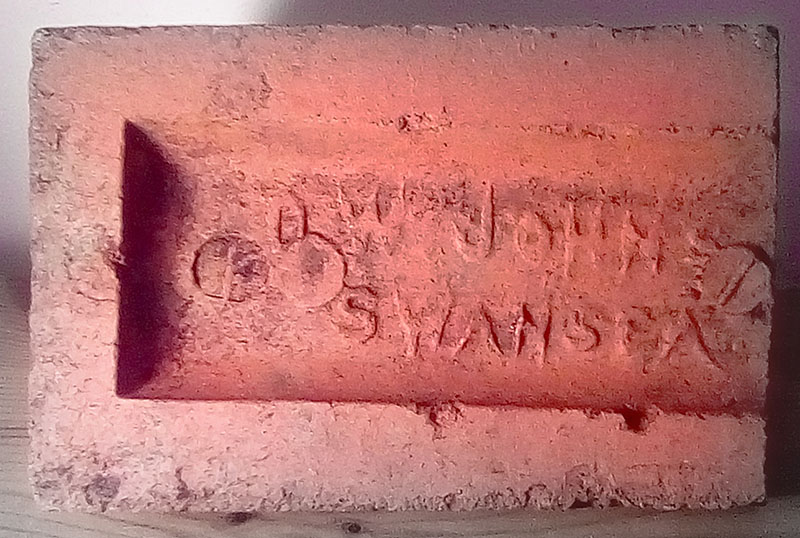
D W Johns was a builders merchant in
Swansea around 1875, later primarily a timber merchant. It appears he was
mainly a dealer and importer so it's doubtful that he owned his own
brickworks. Any of the Swansea or Bridgwater brickworks could be the
manufacturers of this cut down plinth brick. Info by Phil Jenkins, photo by Rob Evans.
A note about Risca brickworks by Richard Paterson: There were once five brickworks at Risca, which lies some 6 miles north-west of Newport. Three were in the Darran area, from which these and the Jones, Risca bricks came. A fourth works, (the Danygraig works) belonged to Southwood Jones, where the SJ Risca British Made brick came from. That site is now used for the manufacture of concrete products. Southwood Jones also had the brickworks at Graigddu, Pontypool where a further example - the SJ Graigddu British Made brick - was made. The fifth brickworks at Risca was founded by John Russell near the Blackvein colliery (see Risca Coal Co).
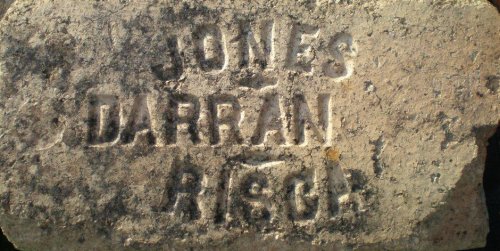
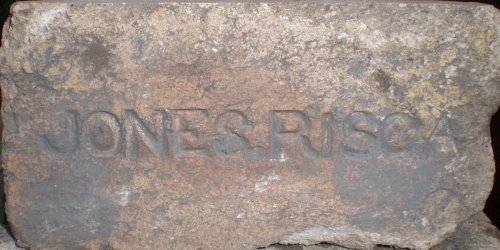
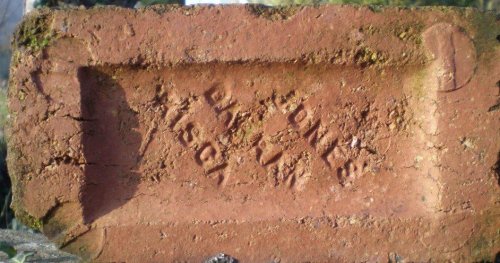
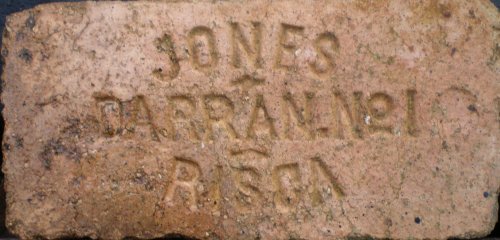
Photos by Richard Paterson
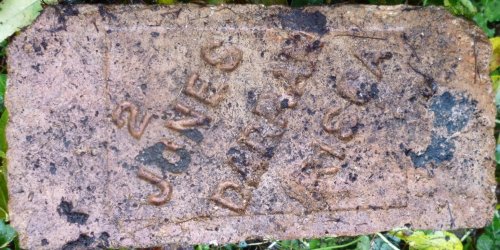
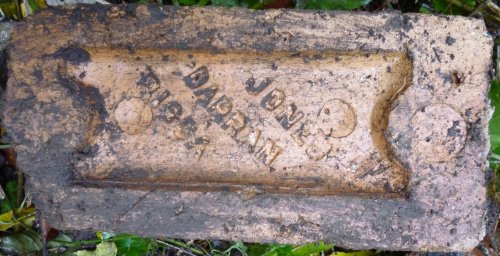
Both found at Cwm-byr, Risca by Richard Clarke
.
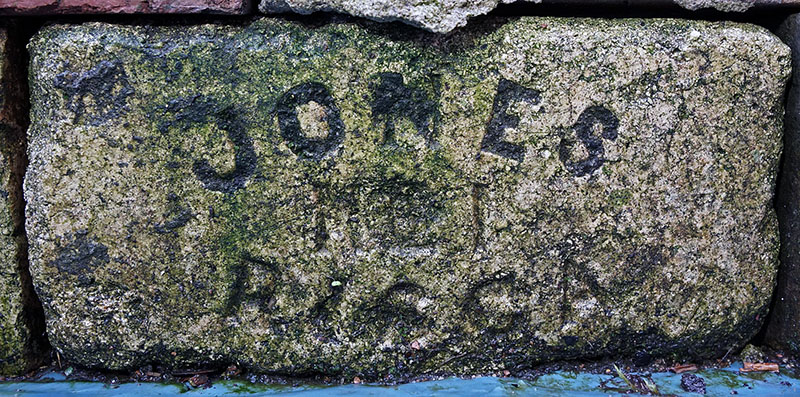
Photo by David Hernon.
